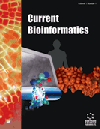
Full text loading...

The automatic classification of heart sound signals offers an economical and convenient approach for early diagnosis of cardiac diseases. By leveraging technological advancements, this method facilitates early detection and management of heart conditions, which is critical for improving patient outcomes.
To address the challenges in analyzing complex heart sound signals, we introduce a novel method utilizing EasyMKL-enhanced kernel partial least squares (KPLS). This approach begins with transforming segmented cardiac cycles into the time-frequency domain using the short-time Fourier transform (STFT). The STFT representations are then mapped into a high-dimensional feature space using multiple kernel functions derived from Easy MKL, designed to capture and enhance the discriminative nonlinear relationships among various heart sound categories. The extracted features are classified using a Support Vector Machine (SVM) for datasets with balanced samples and an XGBoost classifier for those with imbalanced samples.
The proposed method was evaluated on two publicly available heart sound datasets, the PhysioNet/CinC Challenge 2016 and the Yaseen dataset. On the PhysioNet/CinC Challenge 2016 dataset, our method achieved a sensitivity of 0.9217, a specificity of 0.8950, and an overall score of 0.9084. On the Yaseen dataset, our method achieved an average recall of 0.9933, precision of 0.9930, and F1-score of 0.9930, demonstrating high classification accuracy across different heart sound categories. These results confirm the effectiveness of our approach in extracting discriminative features and improving classification performance.
The high performance across two diverse datasets confirms the generalizability and robustness of the proposed method. Notably, the EasyMKL-enhanced KPLS framework captures complex nonlinear patterns while maintaining interpretability—an essential attribute for clinical applications. Compared to traditional approaches, our method significantly improves feature discriminability, as evidenced by ablation studies. While minor misclassifications persist in acoustically similar classes, the model consistently outperforms baselines, highlighting its strong potential for deployment in real-world intelligent auscultation systems.
The experimental results confirm the superiority of our proposed method, demonstrating its potential as a powerful tool for the automatic classification of heart sound signals. This approach not only enhances the accuracy of cardiac disease diagnostics but also offers a robust framework for handling complex and nonlinear characteristics of heart sound data, promising significant contributions to clinical practices and research in cardiology.

Article metrics loading...

Full text loading...
References


Data & Media loading...